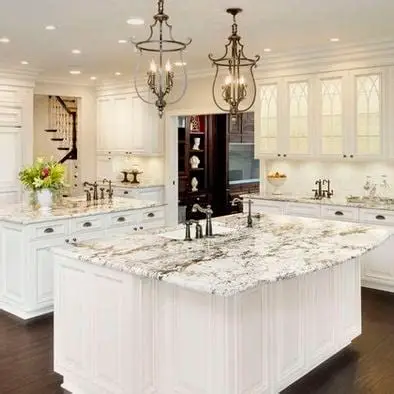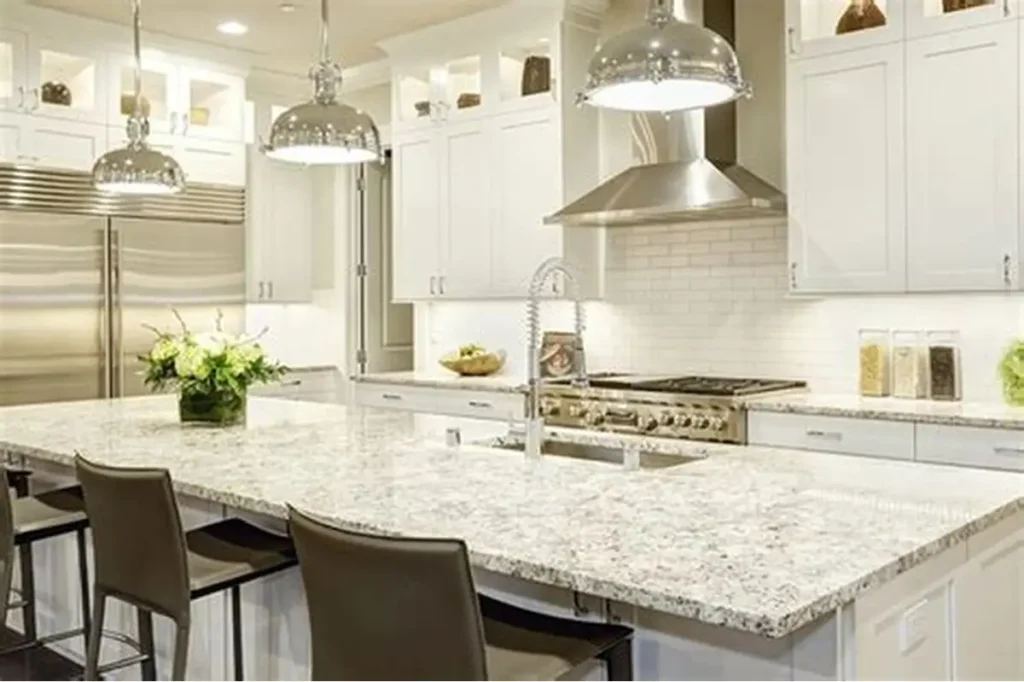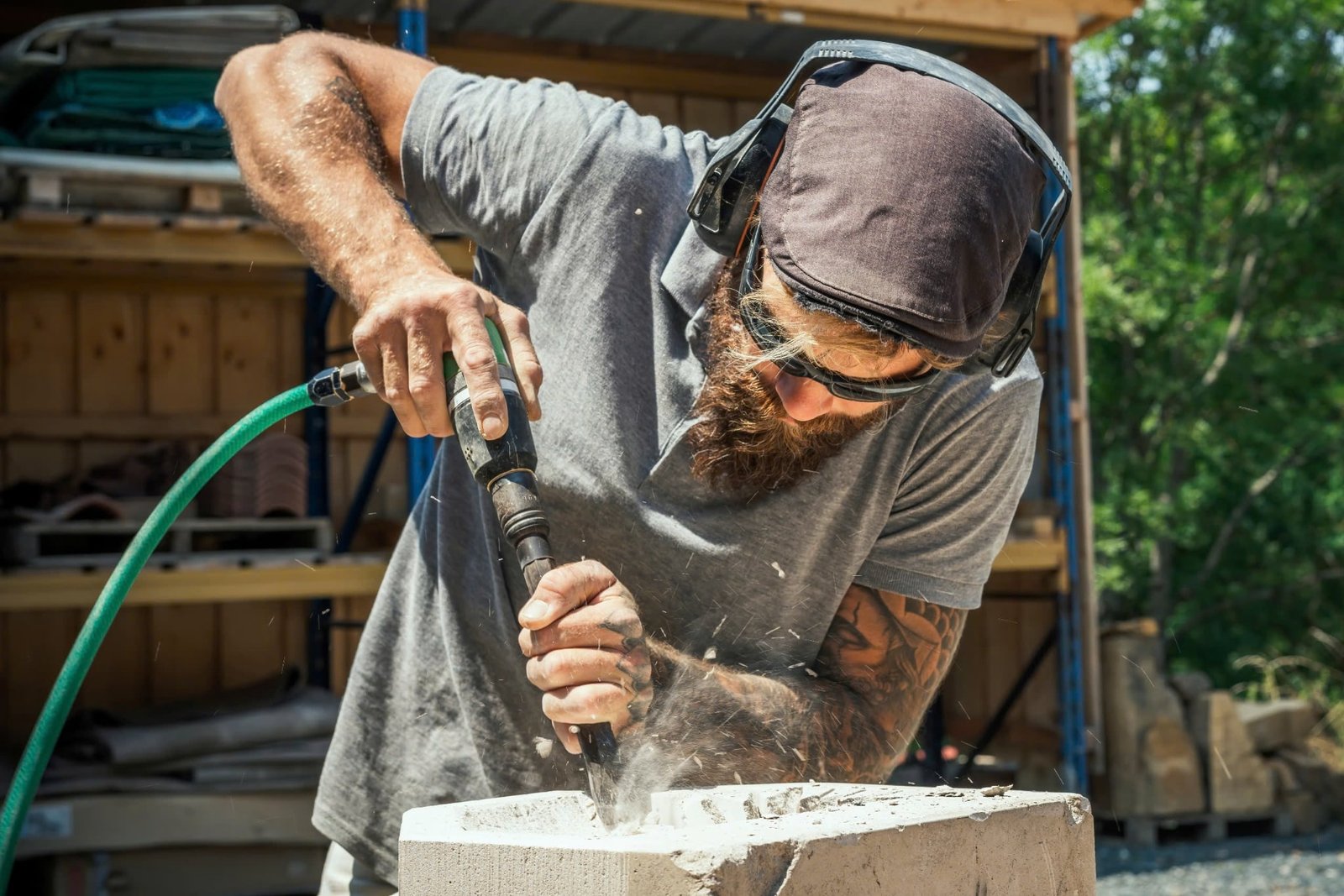
granite countertops can handle a lot of heat
Short answer: yes, granite countertops can handle a lot of heat. As a dense, igneous natural stone, granite forms under intense temperatures and pressure, so hot cookware, coffee makers, even the occasional cookie sheet fresh from the oven won’t automatically damage it. But there are smart habits (and a few limits) you should know to keep your slab beautiful and crack-free for years.
This guide breaks down how heat actually interacts with granite, what’s safe vs. risky, and the best practices pros use in kitchens and baths whether you have black granite countertops, white granite countertops, warm brown granite countertops, or shimmering blue pearl granite countertops.

Granite & Heat: The Science in Plain English
Granite is mainly quartz and feldspar locked together in a crystalline matrix. That structure gives it:
- High heat resistance: Typically safe against brief, intermittent contact with hot cookware.
- High compressive strength: Great load-bearing capacity for granite kitchen countertops and granite bathroom countertops.
- Low but real porosity: It can absorb oils or dyes without sealing (heat won’t cause staining, but heat can accelerate absorption if a spill occurs).
Translation: a hot pot won’t melt or scorch granite, but extreme, uneven, or prolonged heat can create thermal shock, leading to cracks, or can discolor resin fills at seams and pits.

What Exactly Is “Too Hot”?
Think about intensity + contact time + point loading.
- Safe heat moments: Setting a hot mug, a warm casserole, or a pan that’s cooled for a minute or two.
- Caution zone: Pulling a 500°F+ pan and parking it directly on the same spot repeatedly for minutes; placing a heavy, super-hot Dutch oven right beside a cold sink edge (big temperature swing across a stress point).
- High risk: Direct heat concentrated at seams, overhangs, or near cutouts (sink/cooktop) where the stone is narrower; sliding a red-hot skillet onto a honed granite countertop with existing fissures.
Best practice: use trivets or hot pads under blazing-hot cookware. You won’t “baby” the stone—you’ll eliminate the rare situations that cause thermal shock.
Where Heat Damage Really Happens
Even the toughest polished granite countertops can be vulnerable at these locations:
- Seams and fillers
Modern epoxies are heat resistant, but not invincible. Place scorching cookware across a seam long enough and you can soften or discolor the resin line. - Fissures and natural features
All natural stone has character. Surface fissures can become stress risers under sudden heat/cold swings—especially near cutouts. - Edges and overhangs
Edges (eased, bevel, ogee, bullnose, mitered, waterfall) are structurally sound, but concentrated heat + weight on a thin area (e.g., seating overhang) raises risk. - Around the sink deck
Repeated heat from boiling pots + cold water splashes can create a fast temperature gradient. Again, a trivet solves this.
Granite vs. Quartz, Marble & Others: Heat Tolerance Snapshot
| Countertop Material | Heat Resistance | Notes |
|---|---|---|
| Granite | Excellent | Brief contact with hot pans is generally fine; avoid prolonged direct heat at seams/cutouts. |
| Quartz (engineered) | Good to Moderate | Resin binders can discolor or scorch with high heat—always use trivets. |
| Marble | Moderate | Softer stone, more prone to etching and thermal shock; trivets are a must. |
| Solid Surface (e.g., Corian) | Moderate to Low | Can scorch and deform; hot pads required. |
| Concrete | Good | Can micro-crack without sealant care; heat still needs caution. |
| Soapstone | Excellent | Very heat tolerant; still smart to use trivets to protect finish. |
Looking beyond heat to everyday maintenance? See Do Granite Countertops Stain? for prevention and fixes.
Are Granite Countertops Heat Resistant Outdoors?
Yes—many granite countertops for outdoor kitchens thrive in sun, rain, and grill duty. A few pointers:
- Choose denser stones (darker granites often absorb less).
- Account for rapid swings: Cold nights + hot grill tools = bigger thermal gradients. Use trivets and avoid placing searing cookware on thin edges.
- Seal more frequently due to UV and weathering.
Finish Matters: Polished vs. Honed vs. Leathered
- Polished granite countertops: Slightly less absorbent; show fewer water marks; great everyday durability.
- Honed granite countertops: Matte look; can reveal fingerprints and water spots; heat behavior is similar, but residue is more visible—keep a microfiber handy.
- Leathered: Textured finish; similar heat tolerance, but valleys can hold oils if not sealed properly.
Everyday Appliances & Granite: What’s Safe?
- Coffee machines, stand mixers, air fryers, slow cookers: Safe for daily use; their base insulates heat.
- Instant Pot & pressure cookers: Typically fine, but place a trivet under the unit if it vents downwards.
- Toaster ovens & portable induction: Use a heat mat to deflect long, steady heat from the same spot.
Smart Heat Habits from Professional Fabricators
- Use trivets under blazing-hot pans. It’s the easiest way to eliminate thermal shock risk.
- Mind the seams. Don’t park screaming-hot cookware across a seam line or right at an inside corner.
- Transition time helps. Let pans cool 60–90 seconds on the stove before setting them down.
- Protect near the sink. Avoid placing hot cookware across a cold, wet sink rail.
- Use cutting boards. Not heat-related, but it keeps knives sharp and finish pristine.
Professionals also rely on safe material handling. For trade readers, check out Forklift Boom FB1-2720 and pro resources at Toolrange Asia.
Heat + Sealer + Stains: What to Know
Sealers don’t make granite “heatproof,” but they buy you time against stains by filling micro-pores. Heat won’t degrade a quality, fully cured impregnating sealer from normal cooking, but prolonged, concentrated heat isn’t ideal—another reason trivets win.
- Clean daily with a pH-neutral stone cleaner.
- Test yearly: place a few water drops; if the stone darkens quickly, reseal.
- For sink care and hard-water buildup, see How to Clean a Granite Sink.
Special Cases: Color, Pattern & Installation
- Black granite countertops: Often denser; great with heat, but show hard-water spotting. Dry around faucets.
- White & light granites: A bit more absorbent; heat behavior is similar, but be vigilant with sealing to guard against staining from colorful spills.
- Busy patterns vs. uniform: Heat tolerance is not pattern-dependent, but fissure distribution and seam protection still matter.
- Proper support: Overhangs need the right brackets/corbels to keep the slab stable when you set down heavy, hot cookware.
Maintenance Tips That Keep Heat a Non-Issue
- Wipe spills promptly (especially oils and wines).
- Keep a couple of attractive trivets on the counter so they’re always within reach.
- Avoid dragging super-hot pans across the surface.
- Reseal on schedule; maintain granite slabs for countertops like you would any investment finish.
- Choose a reputable installer for granite countertop installation services and ask about seam placement relative to cooktops and sinks.
Searching for value? Many homeowners explore where to buy granite countertops at wholesale prices, local granite fabricators, or a granite countertop showroom [location] to compare stones and ask about heat performance.
Heat & Granite Countertops
Can I put a 500°F pan on granite?
Briefly—often yes. But for repeated, prolonged contact, use a trivet to avoid thermal shock or seam discoloration.
Will a hot pan crack granite instantly?
It’s rare. Cracks typically occur only with sudden, extreme temperature change at a vulnerable point (seam, cutout, thin edge). Trivets remove the risk.
Do trivets trap heat and damage sealers?
No—trivets dissipate heat before it reaches the stone. They protect the sealer and resin lines.
Is granite better than quartz for heat?
Generally yes. Quartz’s resin binders can discolor with high heat, so hot pads are mandatory. Granite is more forgiving.
What about granite countertops near me for outdoor kitchens?
Ask for dense stones, request factory sealing, and plan for seasonal resealing. Keep trivets next to the grill.
Quick Heat Safety Checklist (Print-Friendly)
- ☐ Keep 2–3 trivets/hot pads on the counter.
- ☐ Never set scorching cookware across a seam or cutout.
- ☐ Let pans cool briefly before placing on stone.
- ☐ Dry the sink deck to avoid hard-water film (especially on dark granite).
- ☐ Clean with pH-neutral stone cleaner; reseal as needed.
- ☐ Use cutting boards; don’t combine high heat + heavy impact at edges.
Final Word: Granite Loves the Heat—With a Little Help from You
From busy family kitchens to spa-calm baths, granite countertops earn their reputation: they’re heat resistant, durable, and timeless. Use trivets for the hottest cookware, respect seams and cutouts, and keep up with simple maintenance. Do that, and your custom granite countertops—polished, honed, leathered, black, white, brown, or blue pearl granite countertops—will keep their luster for decades.
Helpful Resources & Anchor Links
- Pro-grade handling & accessories: Toolrange Asia
- Industrial material handling: Forklift Boom FB1-2720
- Sink care companion: How to Clean a Granite Sink
- Stain prevention & fixes: Do Granite Countertops Stain?

